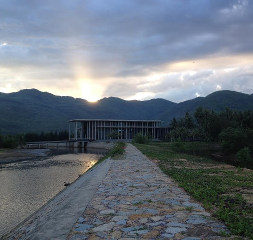Speaker
Description
The accelerated expansion of the universe is strongly manifested
after the discovery of unexpected reduction in the detected energy
fluxes coming from SNe Ia. Other observational data
like CMBR, LSS and galaxy redshift surveys also
provide evidences in this favor. These observations propose a
mysterious form of force, referred as dark energy (DE), which takes
part in the expansion phenomenon and dominates overall energy
density of the universe.
Physical origin of DE is one of the largest mysteries not only in
cosmology but also in fundamental physics. Holographic reconstruction of modified gravity model is a very
active area of research in cosmology. Unfortunately, nature of DE is
still not known and probably that has motivated theoretical
physicists towards development of various candidates of DE and
recently geometric DE or modified gravity has been proposed as a
second approach to account for the late time acceleration of the
universe. In literature, mostly reconstructed work has been done
with polytropic EoS, family of holographic DE models, family of
Chaplygin gas, scalar field models in general relativity as well as
modified theories of gravity (in framework of $f(T)$ gravity).
The polytropic gas model can explain the EoS of degenerate white
dwarfs, neutron stars and also the EoS of main sequence stars. The present paper reports a study on the cosmological consequences
arising from reconstructing $f(T)$ gravity through new
holographic-polytropic dark energy. We assume two approaches, namely
a particular form of Hubble parameter $H$ and a solution for $f(T)$.
We obtain the deceleration parameter, effective equation of state as
well as torsion equation of state parameters from total density and
pressure in both cases. It is interesting to mention here that the
deceleration and torsion equation of state represent transition from
deceleration to acceleration phase. We study the statefinder
parameters under both approaches which result that statefinder
trajectories are found to attain $\Lambda$CDM point. The comparison
with observational data represents consistent results. Also, we
discuss the stability of reconstructed models through squared speed
of sound which represents stability in late times.
